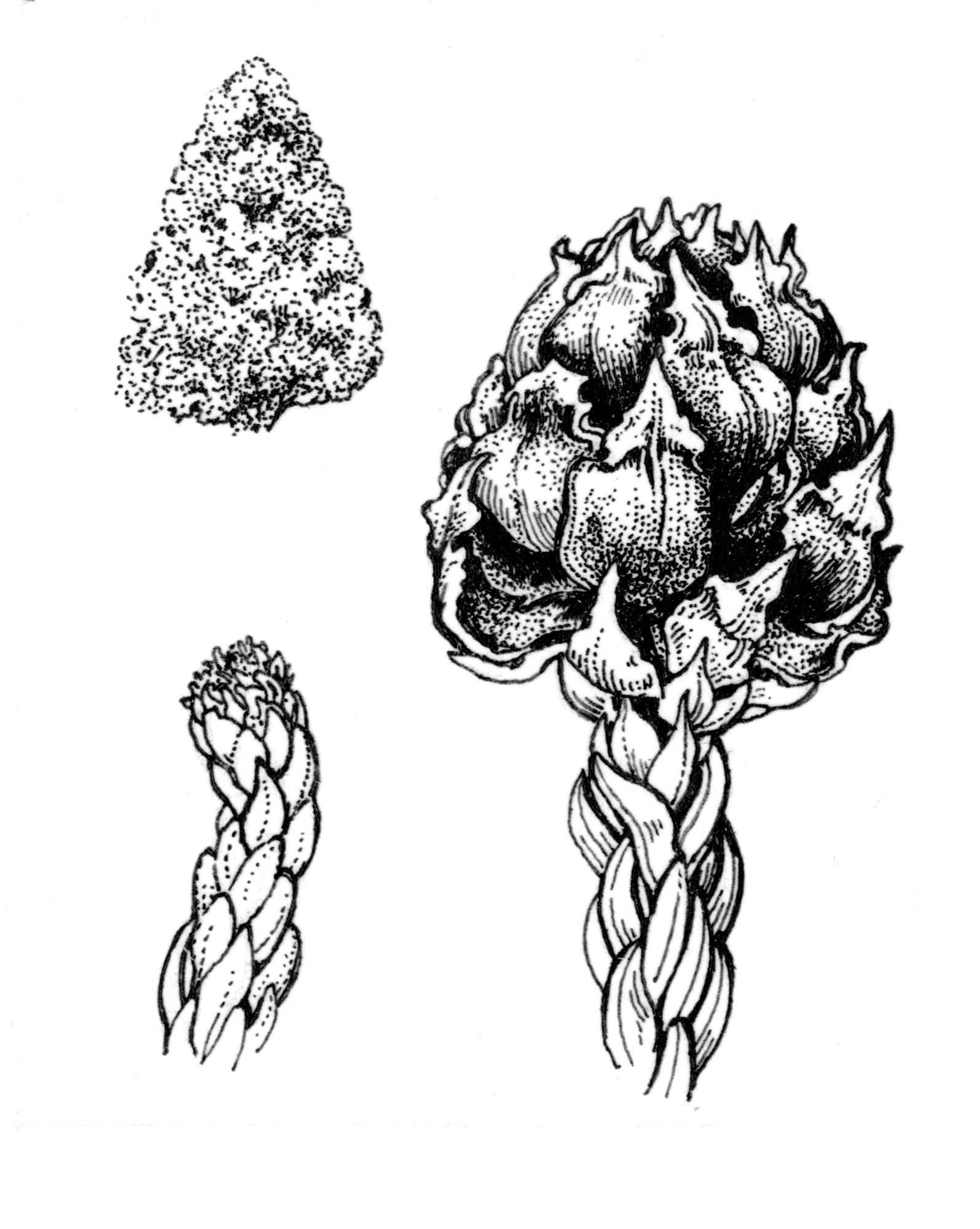
Greek athroos - crowded, taxis - arrangement; referring to the dense arrangement of the cone scales.
Evergreen slow-growing trees, living to 500 years old or more in the wild. Bark fibrous, slightly-furrowed. Branches irregular and dense. Branches spreading, tips deciduous. Leaves small, spirally arranged, incurved and spiny, to c. 12 mm long, occasionally scale-like, dark green and overlapping, the bases extending down the stem. Male cones solitary at the tips of the shoots, catkin-like. Female cones solitary and terminal, round, c. 2 cm wide with 12-25 woody, spine-tipped scales each with 3-6 ovules, maturing in the first year. Seed small and thin with two narrow wings.
The only genus of the Taxodiaceae growing naturally in the Southern Hemisphere. Uncommon in cultivation and more of botanical than ornamental interest but sometimes available in the nursery trade, mostly in Tasmania. Mature specimens not known in cultivation.
3 species from Tasmania: it is possible that A. laxifolia is a hybrid between the other two as it occurs wherever the distributions of the others overlap.
Seed, cuttings or layering. May be grafted onto Cryptomeria stock.
Athrotaxis selaginoides, King Billy Pine, once used as a commercial fine-grained timber.
Closely related to Cryptomeria but the leaves are not ridged on the back and the cones have scales with a single point and 3-6 ovules.
Source: (1995). Taxodiaceae. In: . Horticultural Flora of South-eastern Australia. Volume 1, Ferns, conifers & their allies. The identification of garden and cultivated plants. University of New South Wales Press.
